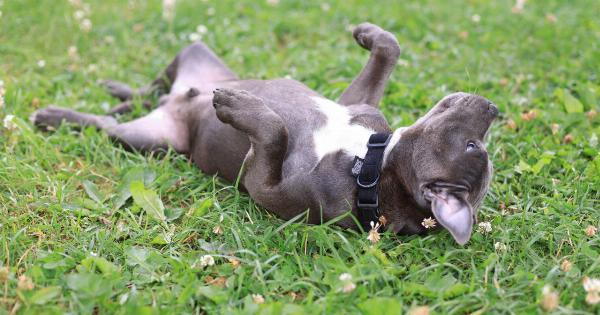Dogs are man’s best friend. They are loyal, affectionate, and always by our side. However, sometimes our furry friends can suffer from separation anxiety.
This condition can be stressful for both dog and owner, but understanding the root causes can make it easier to manage. In this article, we will explore what separation anxiety is, its symptoms, and the root causes behind it.
What is Separation Anxiety?
Separation anxiety is a condition in which dogs become anxious and stressed when they are separated from their owners. This can lead to destructive behavior, excessive barking or howling, and even self-harm.
Dogs suffering from separation anxiety may also engage in inappropriate elimination in the house, even if they are otherwise housetrained.
Signs of Separation Anxiety
There are several signs of separation anxiety that you should look out for. Some of the most common ones include:.
- Excessive barking or howling
- Destructive behavior (chewing furniture or walls)
- Pacing or restlessness
- Panting or drooling
- Inappropriate elimination (urinating/defecating inside the house)
- Attempting to escape (digging, scratching or jumping fences, doors or windows)
- Depression or lethargy
If you notice any of these signs, it’s important to take your dog to the vet. They can help rule out any underlying health issues and provide advice on how to manage the condition.
Root Causes of Separation Anxiety
There are several factors that can contribute to separation anxiety in dogs. Some of these include:.
1. Lack of Training
Dogs need to be trained from an early age to develop good behavior. If they are not given enough training, they can become anxious and restless when left alone.
Training should include basic obedience commands like “sit,” “stay,” and “come,” as well as socialization with other dogs and people.
2. Past Trauma
Dogs that have experienced trauma in the past, such as abandonment, abuse, or neglect, may be more prone to separation anxiety. They may associate being alone with the negative experiences and become anxious and stressed when left alone.
3. Lack of Exercise and Playtime
Dogs need regular exercise and playtime to stay healthy and happy. If they are cooped up inside all day without enough exercise, they can become bored and anxious.
This can make them more prone to destructive behavior when left alone, as they look for ways to occupy themselves.
4. Change in Routine or Environment
Dogs thrive on routine and familiarity. If there is a sudden change in their routine or living environment, it can cause anxiety and stress. This is especially true if the change involves their owner leaving more frequently or for longer periods of time.
5. Genetics
Some breeds of dogs are more prone to separation anxiety than others. For example, dogs that were bred for companionship, like toy breeds, may be more prone to separation anxiety than dogs bred for guarding or hunting.
6. Overattachment to Owners
Dogs that are overly attached to their owners may become anxious when separated from them. This is common in dogs that have been rescued from shelters or have experienced trauma in the past.
7. Lack of Socialization
Dogs that are not socialized to different people, animals, and environments may become anxious and stressed when left alone. Socialization should begin at an early age and include exposure to different environments, sounds, and people.
Managing Separation Anxiety
If your dog is suffering from separation anxiety, there are several things you can do to help manage the condition. These include:.
1. Training and Socialization
Training and socialization are critical for preventing and managing separation anxiety. Dogs should be trained from an early age to develop good behavior and obedience. Socialization should include exposure to different people, animals, and environments.
2. Exercise and Playtime
Dogs need regular exercise and playtime to stay healthy and happy. They should be given plenty of opportunities to run, play, and engage in interactive games like fetch or tug-o-war.
3. Crate Training
Crate training can help dogs feel secure and comfortable when left alone. It is important to introduce the crate gradually and make it a positive experience for your dog. Never use the crate as a punishment.
4. Desensitization and Counterconditioning
Desensitization and counterconditioning can help reduce your dog’s anxiety when left alone. This involves gradually exposing your dog to short periods of time alone and rewarding calm behavior.
Over time, you can gradually increase the length of time your dog is left alone.
5. Medication
If your dog’s separation anxiety is severe, your vet may recommend medication to help manage the condition. This can include anti-anxiety medication or natural remedies like calming supplements.
Conclusion
Dogs suffering from separation anxiety can be stressful for both dog and owner. However, by understanding the root causes of the condition, it is possible to manage it effectively.
Training, socialization, exercise, and playtime are all essential for preventing and managing separation anxiety. Additionally, crate training, desensitization and counterconditioning, and medication can be effective treatments for more severe cases of separation anxiety.



























